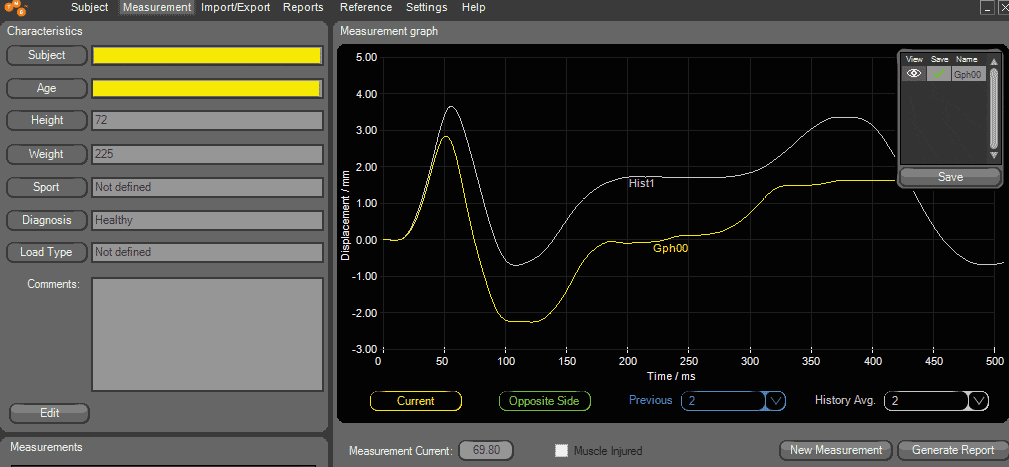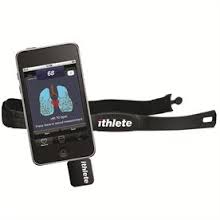
Ryan Horn was appointed as assistant strength and conditioning coach at The University of Tulsa in December 2011. He is directly responsible for the design and implementation of strength and conditioning programs for men’s and women’s basketball, women’s soccer, and softball, and will assist with the football team.
Horn came to Tulsa after spending five years at Virginia Commonwealth University as the associate head strength and conditioning coach. Horn was directly responsible for designing and implementing strength and conditioning programs for men’s and women’s soccer, field hockey and golf while also assisting with men’s and women’s basketball. Before that, Horn was a volunteer intern at Robert Morris University and Liberty University where he assisted with all aspects of the strength and conditioning program for football and men’s and women’s basketball. Horn played football at East Stroudsburg University for one year and James Madison University for 3 years.
Originally from Inwood, W.V., Horn graduated from Shepherd University with a bachelor’s degree in exercise science in May of 2007 and completed his master’s degree through the Virginia Commonwealth University Center for Sports Leadership in 2008.
Horn is an approved mentor and Strength and Conditioning Coach Certified through the Collegiate Strength and Conditioning Coaches Association. He is also a certified Sports Performance Coach through USA Weightlifting and a Level 1 Track and Field Coach through USA Track and Field.
Ryan is now the new strength and conditioning coach for Wake Forest University Men’s Basketball.
Reducing and Managing Jumpers Knee
Freelap USA — Ryan, how does Tulsa address jumpers knee with lower body lifting? Many coaches are trying to increase posterior chain strength, ankle, and better jumping mechanics. How frequently do you test these factors and what success have you had with changing those aforementioned problems?
Horn — When addressing jumpers knee there are numerous factors to consider. First we must address any dysfunction or pattern of loading (volume x intensity) that may be contributing to an acute injury or chronic/cumulative injury pattern. Review of injury pathology and a lower quarter screen should provide some direction on appropriate exercise selection and program design. As far as training modifications are concerned we recommend the following:
- Prioritize posterior strength development
- Extensive posterior chain exercises (hip lifts, band resisted abduction, etc.) are performed daily before training sessions.
- Intensive and more structurally taxing means (glute bridges, deadlifts, glute ham raises, back extensions, RDL’s, etc.) are utilized 2-4 times per week and make up the bulk of lower body training for those with a history of patellofemoral pain.
- Lengthen and improve tissue quality of anterior chain musculature.
- Structurally taxing soft tissue modalities such as Graston, A.R.T, and deep tissue massage are utilized 1-2 times per week.
- Light flushing massage (see chart), foam rolling and other self myofascial release techniques are performed daily before and after training sessions.
- Hip flexor stretching techniques and mobilization are performed before and after training sessions.
- Maintain a vertical shin angle and femoral control during quad dominant exercises.
- Minimizes sheering forces and undue stress on the knee joint.
- Suitable options include; Box squats, reverse lunges, and single leg box squats (standing and sitting on box).
- Closely monitor volume of high impact activities and adjust loading accordingly.

Figure 1: The graph shows the before and after muscle tone of the rectus femoris after a 30 minute pneumatic compression device (Flush) measured by Tensiomyography. Questions of how to optimally place recovery modalities based on timing is an explored area coaches and medical professionals are interested in. (Credit Landon Evans).
Carl’s Take — Coach Ziegler shared videos of D1 centers in basketball squatting deep and doing full Olympic lifts. I believe that the right training can reduce strain on the tendons by improving recruitment and contributions of other muscle groups besides the quads. Many roads can lead to Rome and it’s up to the strength coach to be the first in line to reduce injury by proper preparation. Leg training should be the cornerstone to reducing muscle and joint problems and soft tissue therapy is extremely valuable to help manage tissue textures of the lower extremities.
Applied Sport Science and Sports Nutrition
Freelap USA — Nutrition is a difficult area with college athletes who are not great cooks and constantly traveling. You use a post workout drink and do blood testing with your athletes, how do you evaluate the impact of this to encourage compliance? I am sure the athlete and those investing a budget for it want to see a ROI (Return on Investment). Do you share reports or end of year summaries?
Horn — For our staff athlete compliance is a product of proper goal setting, testing and results. Therefore everything in our program is measured and evaluated. This not only holds our players accountable but keeps our staff honest as well.
From a nutritional standpoint we take profile pictures a minimum of 4 times per year, perform body composition testing (Skinfolds) monthly, and weigh in on a weekly basis. Blood biomarkers (Serum Ferritin, Vitamin D3, Calcium, Zinc, Magnesium) are measured 3-4 times per year. Hormonal and metabolic profiles are a reactive measure and only ordered on a case by case basis. Individual reports are shared with all essential personnel each time testing is performed and full summaries are provided on an annual basis.
As far as the ROI we have seen a dramatic decrease in stress fractures and other repetitive stress injuries during our time at the University. Our first blood panel results showed over 50% of our team had abnormally low levels of Vitamin D3. A number of those cases had previous issues with repetitive stress related injuries (Stress fractures). The medical costs of one stress fracture is far greater than the annual cost of blood work. The nature of the game, environmental factors (indoor sport), and collegiate athlete lifestyle (stress, sleep, nutrition) make it a no brainer for us and worth every penny.
Carl’s Take — I am very impressed with the use of blood analysis and suggest doing it for athletes to make them accountable with nutrition. Many lean athletes are assuming they are optimally prepared but just handing out supplements and taking them as a “supplement seatbelt” is just like giving an athlete a pillow and hoping he gets more sleep. I really like the idea of doing a minimal vitamin and mineral screen and include hormones after a trigger such as chronic issues that are not resolved from classic rest. Nutrition should be evaluated by many different factors, specifically body composition, workout output, and blood testing. Encouraging team outings and nutritional scavenger hunts (Whole Foods Buffet Challenges) are great for helping make good decisions. A simple smartphone photo snap before eating is a great audit for evaluating simple improvements.
Collaboration with Team Coaches
Freelap USA — Every team has their own philosophy with conditioning, and team coaches always want the most fit guys but don’t have workouts that seem to have a planned process to do this pedagogically. How do you work with your coach to manage aerobic and anaerobic fitness?
Horn — The most important factor to consider when organizing and managing the training process is that it’s a collaborative effort. With so many moving parts it is imperative that everyone is on the same page and moving in the right direction. I have found the following to be extremely beneficial.
- Have a clear understanding of head coach’s vision and expectations for the program
- Be able to establish and maintain effective lines of communication with coaching staff and all essential personnel
- Push to maintain a unified front within all departments. Provides consistency in message and approach
- Have a plan for long term preparation
- Comprehensive evaluation and testing protocols
- Must be able show consistent progress over the course of 4 years
- Effectively monitor and manage training loads
- Be prepared and willing to offer insight on the cost of training.
- This is why athlete monitoring is so important
- Build your own army within your department/community
- Maximize all available resources
- Important when faced with budgetary and staffing limitations
- Reach out to different departments on campus and experts in the community to enrich your athletic performance program
Carl’s Take — Team coaches are going to eventually learn to create practices based on information from both the medical and performance department. When coaches start thinking about integrating technical and tactical elements while juggling season planning, sport science, and medical concerns we are going to have interesting changes. Information must be shared rapidly as practices must be tailored to the needs of the daily circumstances. Dr.Mujika is speaking on detraining at the 2014 Boston Sports Medicine and Performance group and it will be interesting to see what we can do better with long competitive seasons and short preparation times. The lack of light aerobic training can be seen with some very interesting muscle fiber studies with angiogenesis and low intensity training is difficult to do when most coaches like sport specific work done at game speed.
Teaching Speed with College Basketball Players
Freelap USA — Player Speed is about getting guys to train fast by sprinting properly. How do you instruct athletes in the 18-22 year range when many of them come from different backgrounds? What are good pointers in teaching motor skills with basketball players that seem less interested in sports performance than football and other sports?
Horn — When dealing with diverse populations athlete categorization becomes an essential part of long-term performance enhancement. During the evaluation process we get to know our athletes inside and out. Along with testing common performance indicators we are also looking at training history, injury history, overall disposition, and personality type. Testing results will provide us with the information needed to prescribe the appropriate means, methods and teaching progressions to facilitate consistent improvements in performance and skill acquisition. Each athlete is built from the ground up utilizing a slow cook approach. We have the pleasure of training the majority of these athletes for 4-5 years and there is no need to rush the process. A simple recipe of consistency, simple but directed training, and hard work can go a long way.
One of our primary responsibilities as an athletic performance department is to create a culture of success for our student athletes. Part of this culture is facilitating a training environment that is conducive to hard work, discipline, personal accountability and competition. What we usually encounter with our basketball players isn’t necessarily a lack of interest but rather a lack of exposure to a structured athletic performance program. Athletes have to learn how to train and practice and it’s our responsibility to show them how.
Carl’s Take — Finally someone talking about areas that interfere with a coaching applying his or her knowledge, the area of team culture and accountability. It may be a little boring to talk about hard work, discipline, personal accountability, and competition, but it matters. I would be more interested in an evaluation form of those areas than just having workshops looking a periodization and corrective exercises I think applied sciences should include practical and personal variables that block the acquisition of the knowledge of training that coaches have. The right balance between charisma, respect, and caring is what I feel needs to be made more of a focus without getting too abstract.
Creating a Team Athlete Monitoring System
Freelap USA — Share with readers how you monitor training from start to finish every day. Everyone is talking about Dashboards but with medical data this is difficult to visualize. Some use technology some just check in verbally with players but this is hard to do with so many on a team. What are your approaches?

Figure 2: Ithlete Heart Rate Monitor
Horn — We currently use the following metrics to assess physiological readiness of the athlete and calculate total training load.
- Session RPE (Borg Scale): RPE’s are collected in private after our cool down. RPE is multiplied by session duration to calculate total training load. I will then reexamine training session and provide a subjective analysis based on athlete feedback and actual work being performed.
- CNS Readiness: Tap Test is performed daily before training.
- Daily Wellness Questionnaire: Includes stress, sleep amount/quality, nutritional status, soreness, regeneration methods usage and training monotony score.
- Heart Rate Variability: Ithlete application for compliant athletes and basic resting heart tracking for the remainder of the team.
- Body Weight: Recorded 2 times per week and compared to nutritional status and performance levels.
- Internal Training Load: Heart rate monitors are worn during practice, competition, and training. Upon completion of training session or competition a PDF copy of session summary is sent out to coaching staff and all essential sports medicine personnel.
Carl’s Take- The above information is very comprehensive and I really like two things that hit a chord with me. First is the daily wellness questionnaire requesting what recovery methods one is using since most recovery devices are not synching to the cloud to know when and who are using what. Very hard to monitor recovery when the team is monitoring just fatigue and player load, so any method that validates use of the modality is key. Obviously a cold bath isn’t going to sync with Bluetooth or RFID, but checking in and seeing what the athlete does is a growing trend with elite sport. Second area that is growing in need and popularity is sharing simple reports to all parties. Amazing how so many focus on getting data but not sharing it properly in a rhythm that is digestible and actionable. A PDF copy of each session, week, month, and season is very helpful to see a timeline of events.
I am a fan of the ithlete system because of several reasons. First, the system is not trying to do too much with HRV and monitoring by slicing up the metric too much. Second, the system provides great hardware that is easy to use as the new finger sensor requires no strap and is convenient. Finally, the system provides subjective indicators that can help athletes and coaches communicate better. Remember physiological monitoring is an estimation of what the body may be percieving so interpretation is always required.
Please share this article so others may benefit.
[mashshare]
